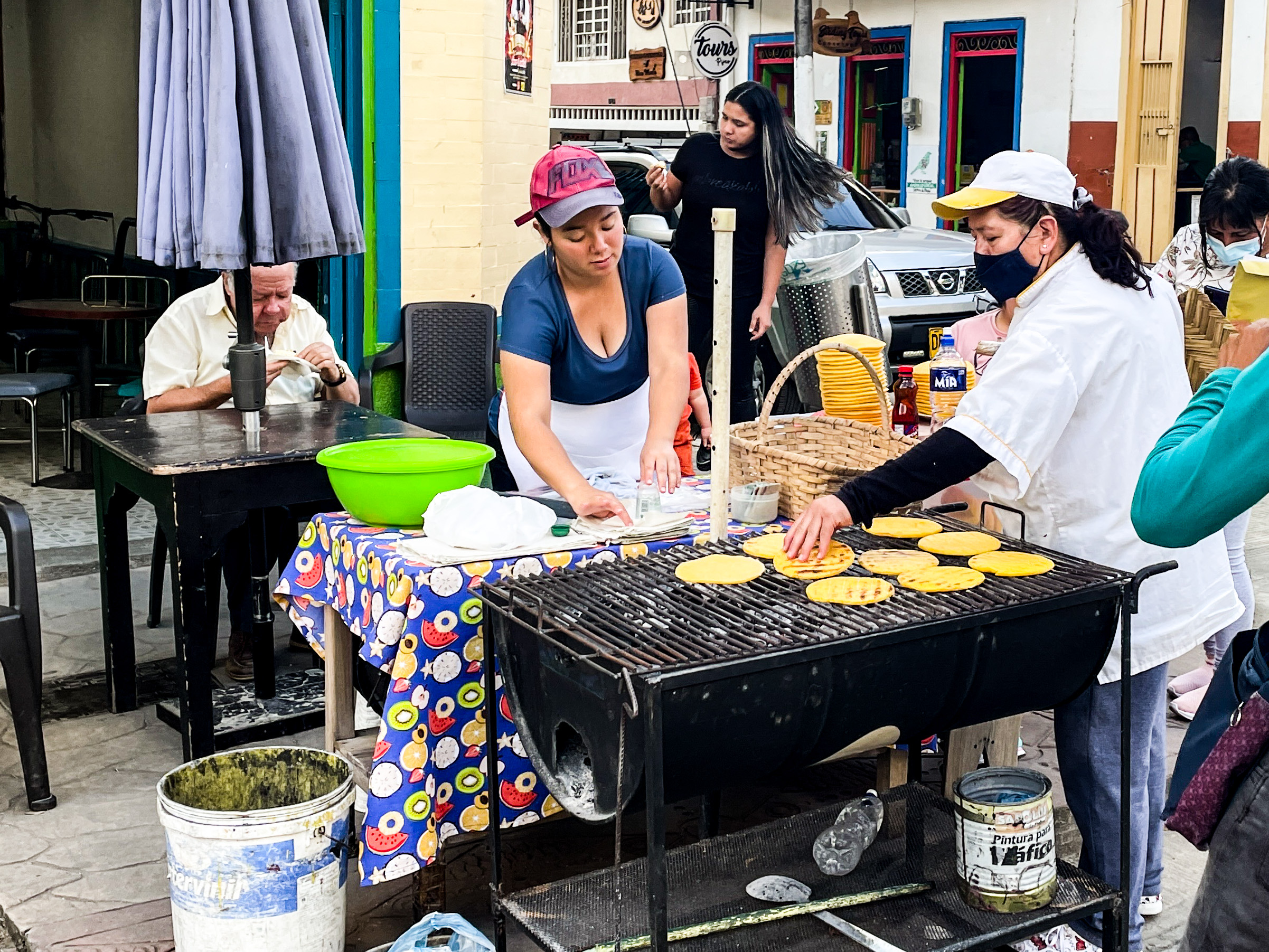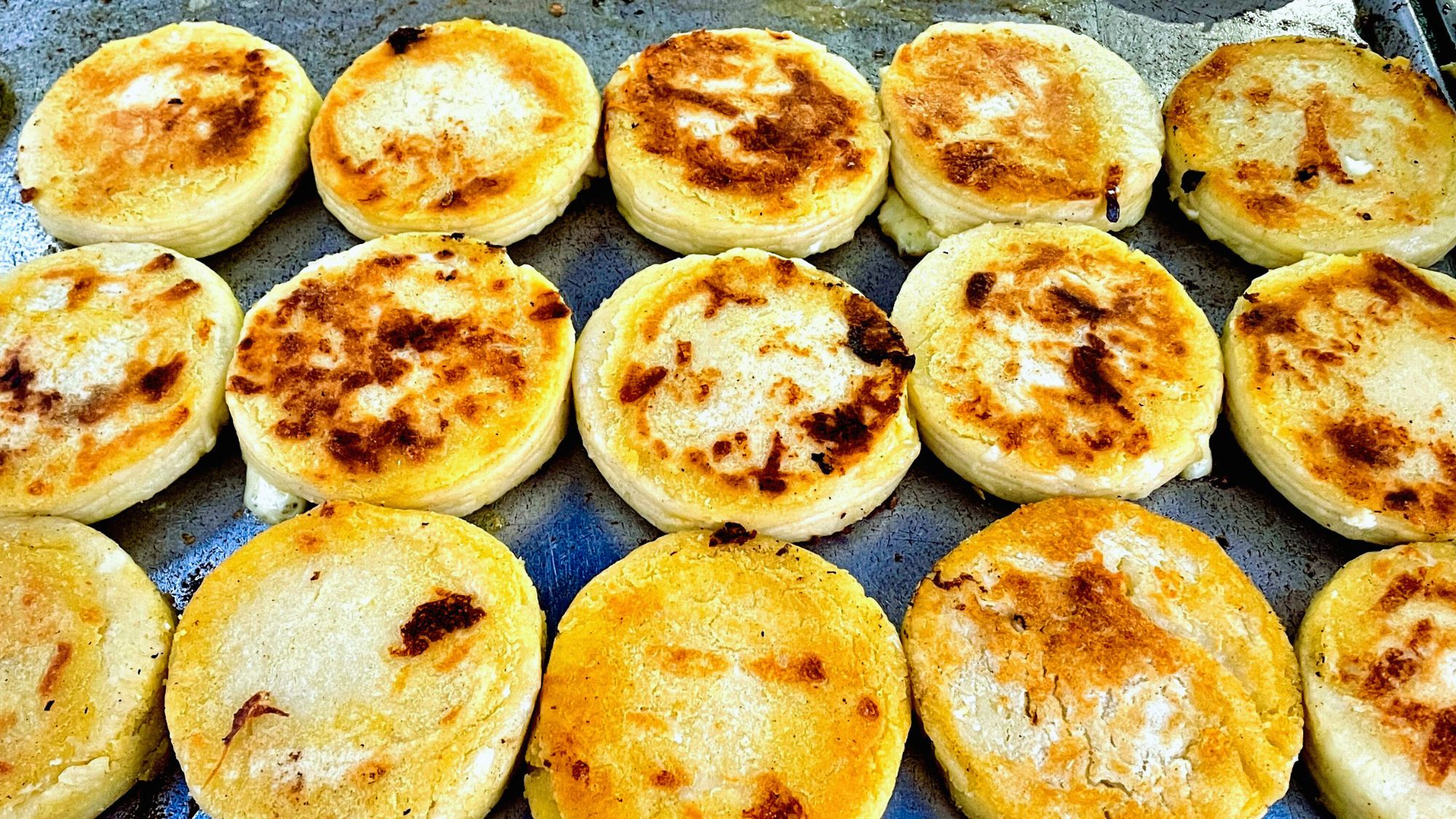Hot and fluffy with lashings of sweet condensed milk, plain and thin served stuffed with finely grated cheese, or fried and crispy with an egg and minced meat inside. Arepas can be found almost anywhere across Colombia, at pretty much any time of day. The flattish round patties are usually made from cornflour and usually griddled or fried and can be served with a variety of fillings or accompaniments. But they aren’t just a filling tasty meal or snack, Colombia’s arepas are also a symbol of the country’s culture, history and national identity. “The Colombian arepa is what ceviche is from Peru or tacos from Mexico,” says renowned Colombian chef, Carlos Gavaria. “We come from the arepa … and Colombia is an arepa.”
There are reportedly over 40 varieties of Colombian arepas, but some put the number as high as 60. No matter how they’re served up, the arepas are the one snack that always sums up culture and pride in Colombia.
Colombia’s Arepas: Culture and National Identity
From luscious green mountains, to semi-arid plains, blankets of rainforest, and palm-fringed beaches touching turquoise waters, the arepas found in each zone of Colombia have their own special touch. They’re “a meal as varied as the biodiversity of our colorful and vibrant country,” according to ProColombia, a Colombian government agency in charge of promoting investment and tourism.
From luscious green mountains, to semi-arid plains, blankets of rainforest, and palm-fringed beaches touching turquoise waters, the arepas found in each zone of Colombia have their own special touch.
From luscious green mountains, to semi-arid plains, blankets of rainforest, and palm-fringed beaches touching turquoise waters, the arepas found in each zone of Colombia have their own special touch. They’re “a meal as varied as the biodiversity of our colorful and vibrant country,” according to ProColombia, a Colombian government agency in charge of promoting investment and tourism.
@westcoastgoodeats Arepas in Colombia ???????? #food #foodie #foodtiktok #foodlover #colombia #fypシ゚viral #fy #paratii
♬ En Barranquilla Me Quedo – Joe Arroyo & La Verdad
The variety of arepas has a lot to do with each area’s unique natural environment and the way they’ve been taught to make and eat them.
“The arepa is like our bread and each area makes it in their own way, depending on their knowledge and the ingredients they have to hand,” says Jaime Rodríguez, chef and founder of Celele restaurant in Cartagena, Colombia. “In part of Huila, there’s a rice arepa and in Popayan there is one with a hole in the middle made from white fermented corn.”
Rodríguez says he’s even come across arepas made with part of the cactus plant in the semi-arid region of la Guajira
Varieties of Colombia’s Arepas
As well as the more unusual varieties, there are the everyday favorites like the Antioquean arepa found in places like Medellin, where the simplest form of arepa is used as an accompaniment to meals. Then there are the thick, gooey griddled arepas oozing with cheese, and arepas de choclo, which are sweeter.
While the geography and climate of certain zones leads to variations in arepas, Colombia’s history also explains how different types have developed. “The blend of cultures that live in Colombia is important in explaining the history of the arepa,” Rodríguez says. “The Spanish colonizers came with black African slaves. Later the English came to the islands of San Andres and Providencia with slaves too. Then during the Second World War there was migration from Arab countries. And before that there were already the tribes and indigenous groups that make up the Caribbean.”
All of this history, the chef explains, is represented by the arepa de huevo, or the fried arepa that’s stuffed with egg and often meat. The corn flour comes from indigenous Americans, the eggs come from the European settlers, the spiced meat comes from the Arabs, and the frying technique hails from African slaves.
Arepas as a part of Colombian culture
Arepas aren’t just celebrated at meal times, but at festivals, in music and in films. Each August the food is celebrated at ArepaFest, a multi day festival in Bogota and Cali, where visitors can try traditional and more modern inspired arepas. The divine status of the arepa in Colombian culture was even reflected in Encanto, the Disney animated movie set in Colombia.
Mirabel’s mother has the magical power of healing ailments through food, and uses arepas con queso to cure people in the town. Most Colombians would probably agree arepas have this special ability to heal, because to Colombians everything seems better after an arepa.
Popular types of Colombian arepas
Arepa paisa – The simplest of arepas, these are plain and thin and often eaten with butter or grated cheese, or as part of a larger meal.
Arepa de choclo – Andes – named after the Quechuan word for corn, these are a type of arepa made with overripe corn which gives them a sweeter taste.
Arepa santandereana – Hailing from the Santander region, these arepas have chicharron (crispy pork belly) inside.
Arepa de huevo – Typically found on the coast, these are stuffed with an egg and often minced meat, then fried.
Arepa boyacense – Made with sweet yellow corn and curd in the middle, this arepa originates from the department of Boyaca.
All photos photographed by Catherine Ellis.





